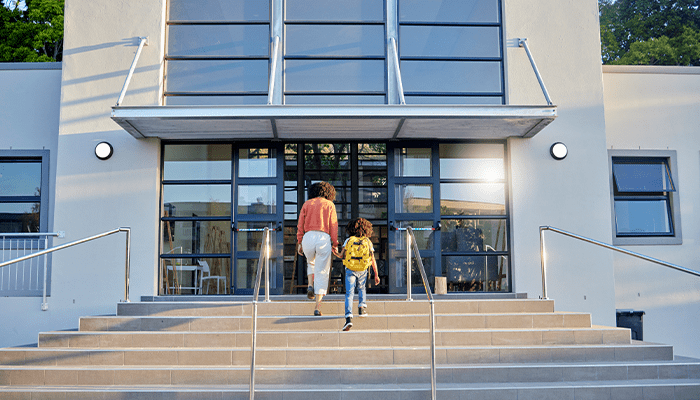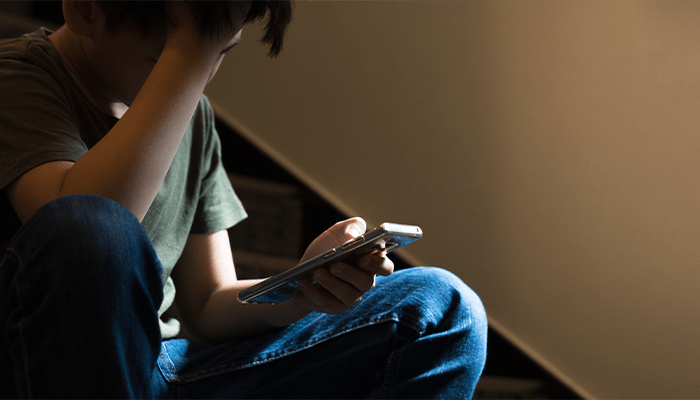
9 Risk Management Insights to Help Schools Prevent Slips, Trips, and Falls
For school leaders, nothing is more important than maintaining the safety and well-being of their students, staff, and campus visitors. Our Education Practice Group supports this critical priority in many ways, including sharing knowledgeable insights on the most serious safety risks and liability exposures educational institutions face. From employee and student mental health issues to cybersecurity threats, transportation exposures, and physical infrastructure vulnerabilities, our team has provided numerous best practices to help schools respond to and manage these risks and reduce the likelihood of an incident and a catastrophic claim. However, tackling today’s more severe school safety concerns typically requires a substantial, institution-wide commitment of time, effort, and resources. These critical exposures may distract schools from more commonplace campus safety risks, like slip, trip, and fall hazards. In this article, we turn the spotlight back on these common risks because they are a persistent injury and liability threat across all educational institutions.
Why Slip, Trip, and Fall Prevention Deserves Continuous Attention on School Campuses
According to OSHA, trip and slip hazards that lead to a fall are the second-leading cause of injury across all types of work environments. However, recent data examined by the National Institute for Occupational Safety and Health illustrates that slips, trips, and falls may be particularly high safety risks at educational institutions and, consequently, these events have become a frequent source of liability claims. In a review of slip-and-fall claims over a recent four-year period, United Educators (UE) provided a window into how the costs of these types of claims can impact a school, finding that per occurrence losses often totaled $1 million or more. As with most liability claims against schools, the financial and reputational impact of slip, trip, and fall cases has the potential to escalate in the future due to today’s climate of rising defense fees, medical expenses, and nuclear verdicts.
Not surprisingly, insurers like UE report a higher volume of claims in the winter, when driveways, sidewalks, steps, building entrances and exits, floors, staircases, and many other indoor and outdoor walking spaces tend to be perpetually icy, snowy, and wet. But it’s critical not to overlook that slips, trips, and falls occur across campuses throughout the year and can happen to anyone, anywhere in and around school property.
Take the next step in protecting your students, staff, and visitors. Learn more about how we can help your institution minimize risk and maximize safety.
9 Preventive Tips for Schools to Limit Slips, Trips, and Falls
Educational institutions that take a proactive and ongoing approach to this risk typically can create a much safer working and learning environment for the people in their school community and, ultimately, limit their institution’s level of liability if an incident does occur.
You and your leadership team may want to use the following questions and benchmark safety practices to help assess whether your school is doing everything possible to minimize the likelihood of a slip, trip, or fall.
- Is a specific person or team in charge of a daily inspection of the campus? Depending on the size of your school, consider having one or more sets of eyes checking school property for potential hazards every day, removing those that can be taken care of relatively easily, and reporting and blocking off any issues that require further maintenance.
- Are all areas of your campus outfitted with the proper level of lighting? Poor lighting can make it difficult to see a spilled liquid, torn carpeting, a broken step, or other hazardous conditions. At the same time, excessively bright light can cause a glare that obscures a danger as well. All campus spaces should be evaluated for adequate lighting, from sidewalks, hallways, and stairwells to facility entrances and exits, parking lots and garages, and indoor fitness and pool areas.
- Are stairs, bleachers, and ramps regularly inspected? This examination should include checking that anti-slip devices are in place; handrails are secured and go all the way down to the last step or the end of the ramp; there are no dips in the steps or ramp; stairs and platforms within a staircase are all the same height; and there are no portions, including screws and bolts, that are loose, missing, or defective.
- Are all floors regularly inspected for hazards and damage? Carefully survey flooring for signs of flaking, chipping, or dull or worn spots; examine carpets or rugs for fraying, tears, or buckling; double-check that area rugs and rain mats have nonslip backings, flat edges, and no excess material that a visitor could trip on.
- Are changes in pavement or floor level sufficiently marked? Since an elevation change as small as ¼ inch is often the cause of a person tripping and falling, it’s recommended that schools implement caution signs, reflective strips, and appropriately bright lights in these transition areas of a floor or walking surface.
- Have floor cleaning procedures been reviewed recently? Take a closer look at custodial routines to ensure that floors are not being over- or under-cleaned; that housekeeping is following the manufacturer’s directions for each different floor surface; that cleanings are timed with the least amount of foot traffic; and that “wet floor” signs are being used to warn people of a potentially slippery situation.
- Have you established specific procedures for inclement weather? It’s essential to have a plan for staying one step ahead of Mother Nature. Alert maintenance and any relevant outside contractors that slip prevention and snow removal services may be needed, and provide all parties clear direction on where, when, and how often snow and ice should be removed.
- When a slip or trip hazard can’t be fixed or removed immediately, do you use effective signage and/or another barrier to keep people away? Your signage should use simple language and universally recognized visuals that a wide variety of people on your campus, from a child to someone who doesn’t speak English as their primary language or who has a learning disability, would all be able to understand. To further protect people from a hazard, consider a temporary barrier or tape off the area.
- Do staff and students know how they can contribute to a safer environment? Consider developing a training or sending out a communication—or, better yet, do both—that covers the definitions for slips, trips, and falls and shares a broad range of hazard examples. Small behaviors, like keeping work and learning spaces clutter-free, closing furniture drawers and doors, wearing proper footwear for the weather, and thoroughly wiping off the soles of their shoes before entering a building, can make a big difference in reducing the risk of a slip or trip.
If you answered all the questions above with a resounding “Yes” and you’re implementing all of the suggested preferred risk management practices, your school has clearly taken steps to limit slip- or trip-and-fall incidents. Despite all your efforts, if someone does slip or trip and injure themselves, performing a thorough accident investigation and documenting it accurately is critical. A well-written incident report will help your insurance company effectively evaluate a potential claim and, if needed, defend your institution against an inaccurate one. Most importantly, when done correctly, this investigation may help you uncover slip or trip patterns and lead you to develop better policies and procedures that make your campus a safer place for everyone.
Related articles

From service dogs and emotional support animals (ESAs) to your run-of-the-mill four-legged friends, boarding schools, colleges, and universities continue to field an increasing number of requests...

There appear to be endless opportunities for cutting-edge technologies, like generative artificial intelligence (AI) and virtual/augmented reality (VR/AR), to facilitate teaching and support learning...

Due to the unique characteristics of the online environment, many professionals in the education space believe that cyberbullying is an even greater threat to the health and well-being of students...